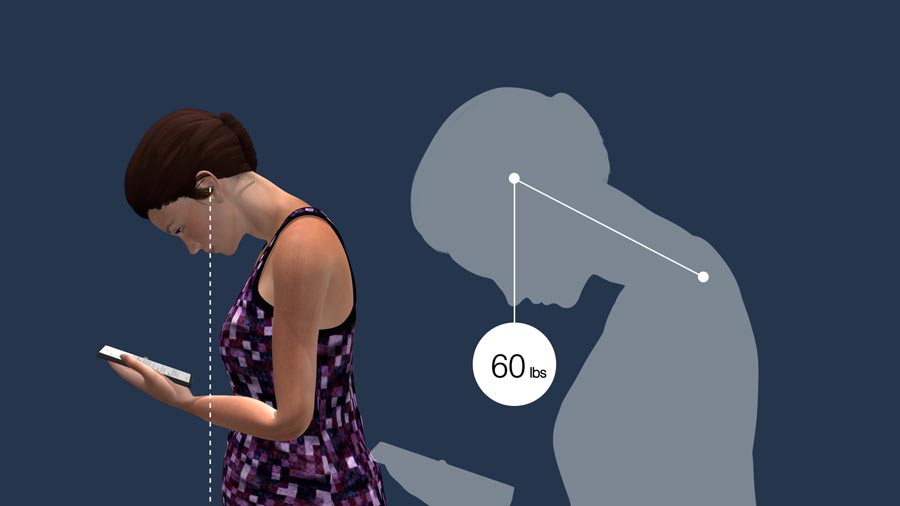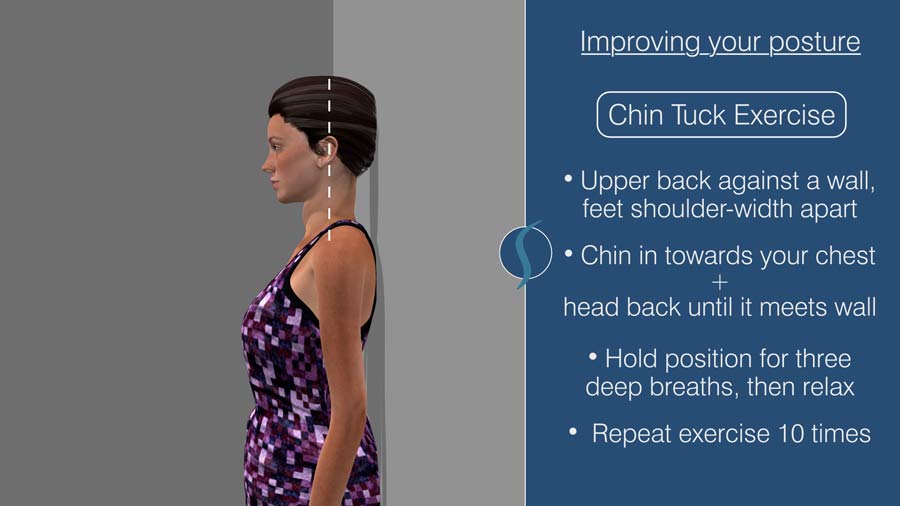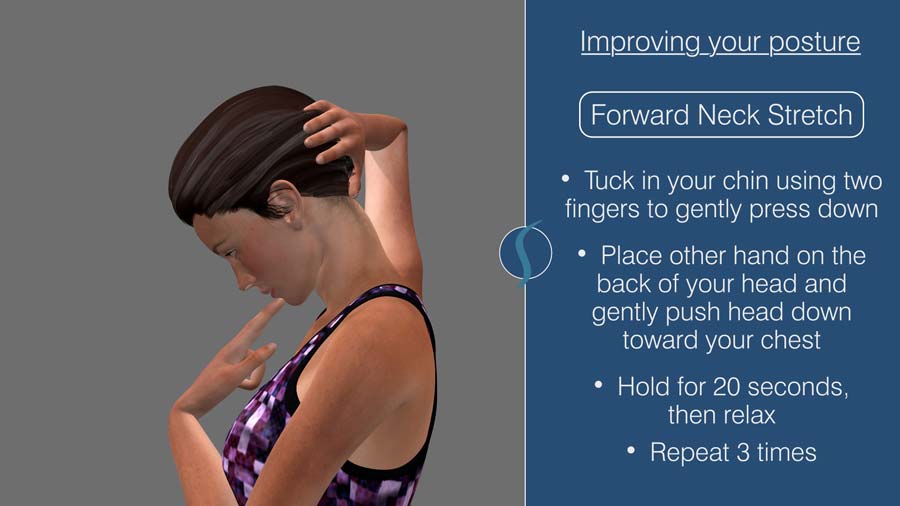Text Neck and Forward Head Posture
Today, I want to talk about something that affects most of us: Text Neck and Forward Head Posture. If you take a look at someone who’s on their phone or laptop, chances are they’re going to be slumped forward with their head tilted down.
Background
Text neck refers to the repetitive stress injury caused by poor posture while using a phone or laptop. In the normal upright posture, the head weighs about 10 to 12 lbs You can see the ears are aligned with the shoulders and the rest of the body. However, the more you bend your head forward to look down at your phone, the more weight or force you place on your neck. At 45°, there’s around 50 lbs of pressure on your neck, and at 60°, there’s 60 lbs.

Your neck is not designed to withstand this pressure for an extended period and consequences include pain and reduced mobility in the neck, upper back, and shoulder, headaches, and forward head posture.
As I just mentioned, forward head posture, or FHP for short, is a long-term result of text neck due to the deconditioning of the neck and shoulders. Muscles in the neck, chest, and upper back can become deconditioned and imbalanced due to prolonged FHP. It’s also associated with kyphosis, which leads to rounded shoulders.
A vicious cycle in which the deconditioning of the muscles from the lack of good posture coupled with the natural loss of muscle strength over time causes the FHP to become more pronounced, increasing the acceleration of spinal degeneration. For this reason, FHP is especially prevalent in elderly populations.
FHP prevention and improving posture
So what can you do to prevent FHP and improve your posture?

Workspace ergonomics
Since we have the natural inclination to hunch over when working at a desk, optimize your workplace ergonomics so you’re encouraged to keep your head level and aligned over your shoulders. For example, you can raise your computer monitor so your eyes are level with the top third of the screen. The center of the screen should be around 17 to 18° below eye level. Your keyboard and mouse should be arranged so your forearms are parallel to the floor and your elbows are bent approximately 90°. Invest in a quality chair that supports your back and make sure your feet are flat on the floor when you’re sitting at your desk.
For those concerned with their sleeping posture, a cervical or orthopaedic pillow may be useful. It’s designed to keep your neck in a more neutral position by supporting the natural curves of your head and neck — but you can achieve a similar effect by placing a rolled towel under your neck. This is In contrast to a normal pillow, which often has us in a slightly flexed forward position.
Chin tuck exercises
Perhaps the single most useful exercise for good posture is the chin tuck exercise. It’s quick and easy to do whether you’re standing, sitting, or even lying down.

To start, stand with your upper back against a wall with your feet shoulder-width apart. Face forward with your head in a neutral position. Tuck your chin in towards your chest to create a double chin, and simultaneously pull your head back until it meets the wall. Hold the position for three deep breaths. Relax and return to a neutral position. Repeat this exercise 10 times. You should feel the muscles in your neck, shoulders, back, and chest all work to align your over your shoulders. It’s particularly useful for strengthening your upper thoracic extensors.

A variation of this exercise is the forward neck stretch that can also be done standing or sitting. Begin by tucking in your chin using two fingers to gently press down if necessary. Place your other hand on the back of your head and gently push your head down toward your chest. Remember to keep your back straight and hold the stretch for 20 seconds. Relax and return to a neutral position. Repeat this exercise 3 times.
Correcting and maintaining good posture require commitment and consistency. As daunting as it may seem at the moment, it will only get easier over time as you incorporate good habits into your lifestyle. Until next time, this is Dr. Shim.
Resources:
https://www.spine-health.com/blog/ways-improve-forward-head-posture
https://www.spine-health.com/conditions/neck-pain/text-neck-symptoms-and-diagnosis
https://www.healthline.com/health/bone-health/forward-head-posture
Last modified: May 21, 2021









